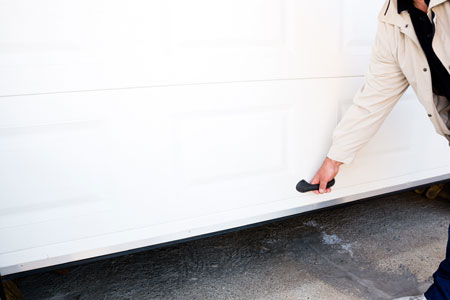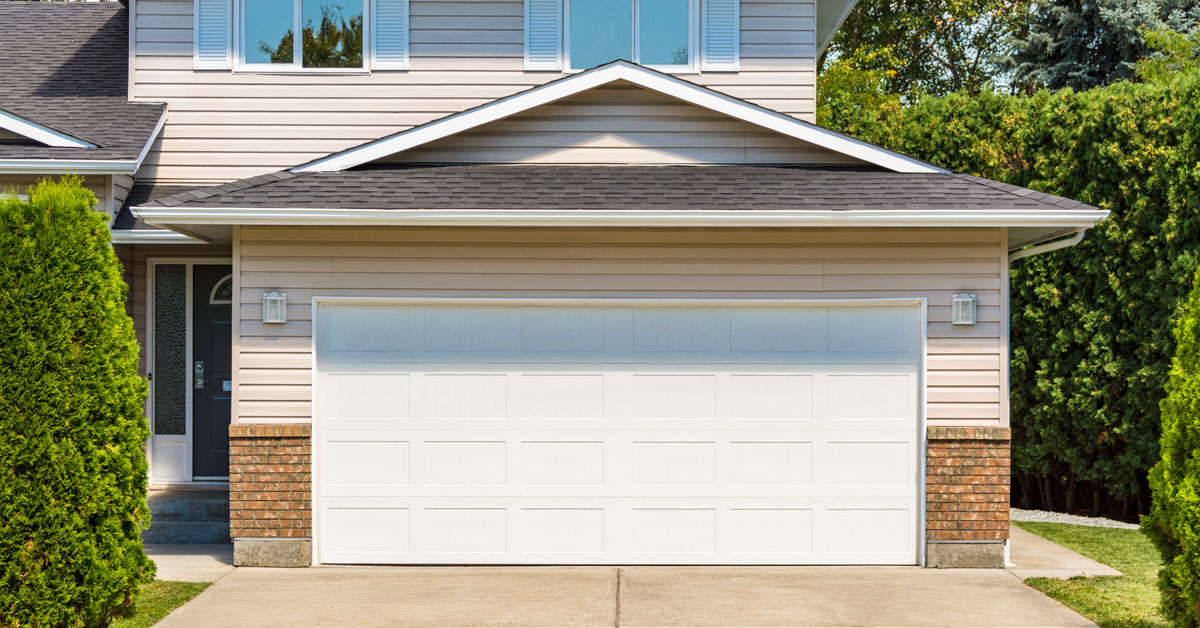Keeping Your Garage Door in Good Health
Just as the rest of your home needs regular upkeep and maintenance, so does your garage door. Often the most significant moving part of a home, the garage door gets used daily and should, therefore, be inspected regularly to keep it operating smoothly. It’s easy to overlook this part of the home and take it for granted, but if neglected, you could end up spending more money than necessary on costly repairs.
If left unaddressed, minor issues could quickly evolve into more hazardous situations. According to the National Electronic Surveillance Survey, garage door related injuries are some of the most commonly reported accidents every year in the United States.
Listen and Keep an Eye Out for Unusual Garage Door Operation
A well-maintained garage door is generally quiet and doesn’t tend to shake much when opening and closing. If you are noticing louder than usual sounds when the door is in operation, there is something off that is causing the issue. Grating and scraping noises and a door that is shaking or rattling are clear indicators that something is wrong. Performing yearly maintenance checks could prevent serious problems from arising.
If you don’t feel equipped enough or aren’t sure about handling any maintenance yourself, call a professional to perform routine maintenance checks for you. It’s better to be safe. So if you don’t think you can handle the following tasks on your own, don’t hesitate to contact your local garage door service provider.
Tighten Up the Hardware
Consistent daily use of the garage door will naturally cause the hardware on the door and track to loosen over time. For the best long term benefits, you should examine the rails and roller brackets, tightening any loose nuts and bolts.
Inspect Cables and Pulleys
Experts advise not to lift or touch the cables or pulleys yourself as they are high-tension parts that can be dangerous. If you notice any worn or frayed cables, call a technician to have them repaired immediately.
Examine and Replace the Rollers If Needed
Nylon rollers will deteriorate over time, requiring regular check-ups for chips and cracks. If you notice any damaged rollers, they will need replacing. You can do this by removing the roller brackets that are holding them in place. Generally, rollers should be inspected twice a year and replaced every five to 7 years, depending on wear and tear.
DO NOT remove the bottom roller bracket as it is attached to the lift cables and can cause serious injury.
Keep Moving Parts Lubricated
When everything is moving smoothly, it reduces the stress placed on the door opener. Using a spray lubricant, such as white lithium grease, spray the rollers, hinges, and springs, wiping off any excess when done. You can also spray the opener’s chain and screw, but do not lubricate if it is a belt-drive opener.
Keep the Tracks Clear
A professional technician only should handle major track adjustments and repairs. If you notice the track has any bends, breaks, cracks, or other damage, call to have it repaired. However, homeowners can regularly inspect the tracks for any debris and remove anything that might be keeping the door from operating smoothly.
Test the Door Balance
 When the garage door is imbalanced, it puts extra strain on the opener and can result in premature failure. If the door balance is off, it can also result in the door unexpectedly closing on someone or something in its path, causing injury or damage.
When the garage door is imbalanced, it puts extra strain on the opener and can result in premature failure. If the door balance is off, it can also result in the door unexpectedly closing on someone or something in its path, causing injury or damage.
To test the balance of your garage door, you will first need to disconnect the opener by pulling the release handle. Once the automatic opener is shut off, manually open the garage door halfway. If you let go and the door stays in place, it is still balanced. However, if the door slams shut or moves up once you let go, it is out of balance and needs to be repaired.
Repair or Replace the Weatherstripping If Needed
The bottom of the garage door should have a weatherstrip that helps to keep out water, dirt, and dust, as well as cold or hot air. If it looks like the weather seal has become cracked or brittle, replace it as soon as possible. Weatherstripping can easily be found at most hardware stores.
Test the Photo-Eye and Pressure Sensor
The auto-reverse is a feature of automatic garage doors that detects if anything is in the path of the door. When properly working, this feature will stop the door and start reversing it back up. There are two sensors on automatic doors that control the auto-reverse function, the photo-eye, and the pressure sensor. The photo-eye uses an infrared beam to detect if anything moves under the door, while the pressure sensor detects when the bottom of the door actually touches something.
To test if the pressure sensor is working, try to hold the door as it closes. If your hands touching the bottom of the door do not stop it from moving, the pressure settings on the sensor might need adjusting, or the whole sensor may need replacing. To test the photo-eye sensor, move your leg back and forth under the door as it is closing. If the door does not reverse when your leg passes in front of the sensor, check the photo-eye. There could be some dirt or debris blocking the sensor. However, if the sensor looks clear, and it is still not working, it likely needs to be repaired.
How All About Garage Doors Can Help
Our team at All About Garage Doors provides a range of garage door repair and maintenance services. Garage door inspections should be performed yearly to keep everything running smoothly. Whether you already suspect your door needs repairs, or you want a routine maintenance check, our technicians are here to help. All About Garage Doors has been providing quality service and garage door repairs to Wilsonville, OR, and the surrounding Portland area for over 32 years. Contact us today to set up an appointment!



